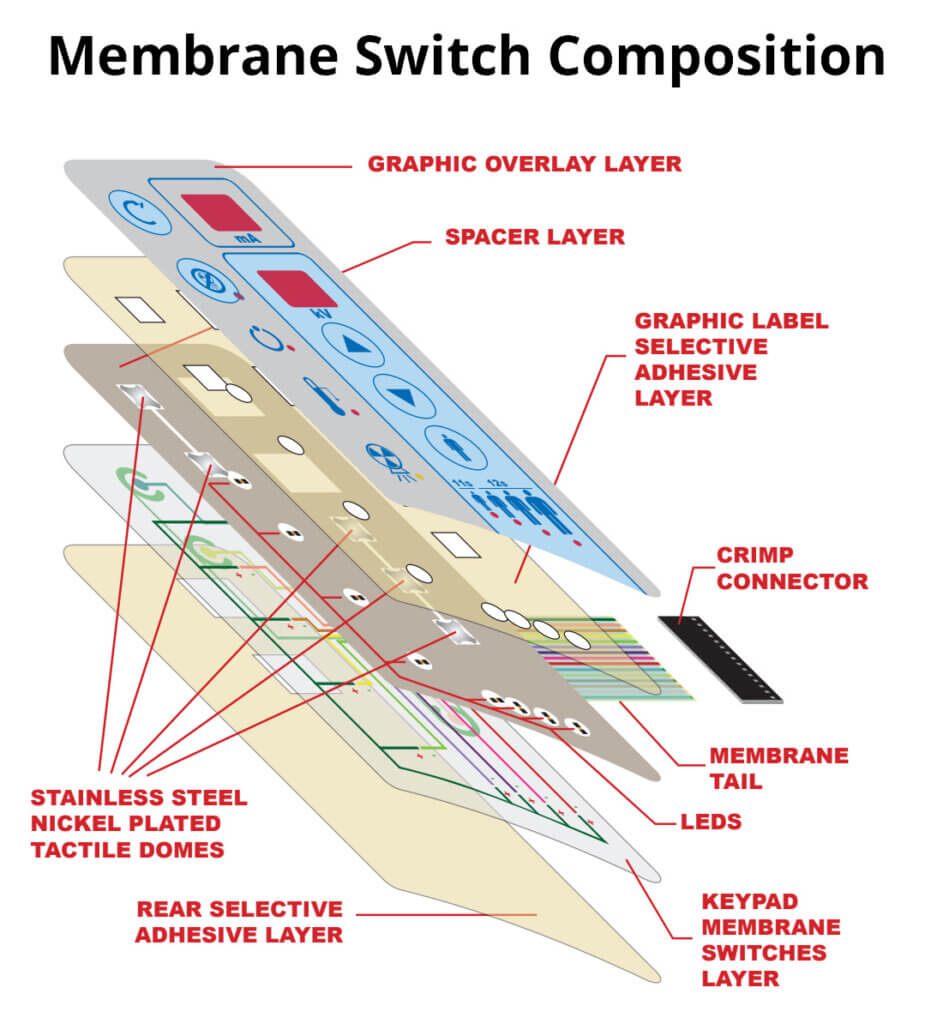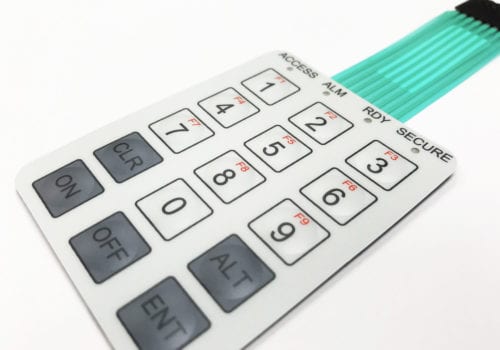Comprehending Membrane Changes: The Trick to Sturdy and Trustworthy Controls

What Are Membrane Layer Switches?
Membrane layer buttons are an advanced remedy in the realm of user interface technology, incorporating performance and layout flawlessly. These tools function as an interface between customers and digital systems, integrating several components right into a compact style. Generally constructed from adaptable, slim layers of materials, membrane layer switches are created to react to touch, making it possible for customers to interact with equipment and digital tools effectively.
The primary aspects of a membrane layer button consist of a published circuit layer, visuals overlay, and a spacer layer that avoids unexpected activation. The visuals overlay can be customized to reflect brand name identity or individual choices, boosting appearances while making sure functionality. Membrane buttons are typically made use of in various applications, consisting of clinical devices, consumer electronics, and industrial tools, owing to their durability and resistance to ecological variables such as wetness and dust.
One of the essential advantages of membrane switches is their ability to withstand deterioration, making them suitable for high-traffic atmospheres. In addition, they are light-weight and need marginal space, enabling for cutting-edge layouts in item advancement. In general, membrane layer changes represent a reliable and useful selection for contemporary digital user interfaces, marrying modern technology with user-centric style principles.
How Membrane Switches Over Work
The procedure of membrane switches rest on a straightforward yet effective mechanism that equates user input into electronic signals. These switches are composed of multiple layers, usually consisting of a graphic overlay, a spacer layer, and a circuit layer. When a customer presses the switch, the top layer flaws, enabling a conductive component in the circuit layer to reach a corresponding conductive pad on the bottom of the visuals overlay. This call closes the circuit and sends a digital signal to the tool, showing that the switch has actually been turned on.
The layout of membrane switches can vary, however they typically integrate domes or responsive elements to offer comments to the individual, improving the total experience - membrane switch. The materials used in membrane switches, such as polyester or polycarbonate, contribute to their toughness and resistance to environmental variables, including wetness and dirt. The printed circuits are typically encapsulated, which shields them from wear and tear Continued over time.
Advantages of Membrane Layer Buttons

In addition, membrane layer buttons are recognized for their longevity. Constructed from robust materials, they are immune to dirt, dampness, and physical wear, which considerably prolongs their life expectancy contrasted to standard mechanical buttons. This toughness makes them especially suitable for high-traffic settings and applications requiring long life.
Another considerable advantage is the convenience of cleansing and upkeep. The smooth surface of membrane layer changes minimizes dust accumulation and is usually unsusceptible spills, making them perfect for settings that call for frequent sanitization.
Additionally, membrane layer buttons provide a streamlined profile, resulting in a thinner layout that can be incorporated right into various tools without including mass. This attribute not only enhances the visual charm however additionally adds to a more ergonomic product style.
Applications of Membrane Buttons
User-friendly and versatile, membrane layer switches discover applications across a wide variety of sectors, consisting of clinical tools, customer electronic devices, and industrial tools. In the medical area, these buttons are essential to devices such as diagnostic tools, client tracking systems, and mixture pumps, where integrity and ease of cleansing are vital. Their capability to endure severe settings and maintain functionality makes them excellent for such applications.

In consumer electronic devices, membrane switches are utilized in products like microwaves, washing makers, and push-button controls - membrane switch. Their smooth layout enables intuitive interface, enhancing the total user experience while giving toughness and resistance to deterioration
Commercial read this tools additionally benefits from membrane layer buttons, specifically in control panels for equipment and automation systems. These switches provide protection against dirt and moisture, ensuring constant performance in challenging environments. Their adjustable attributes enable makers to customize them to certain functional demands, boosting effectiveness and functionality.
Picking the Right Membrane Switch
When choosing a membrane layer switch, it is important to take into consideration numerous variables that affect performance and suitability for details applications. The key considerations include environmental Check This Out problems, tactile comments, sturdiness, and style specifications.
First, examine the operating environment; buttons subjected to wetness, chemicals, or extreme temperature levels require particular materials to guarantee longevity and performance. Next, review the demand for responsive comments. Relying on individual interaction, some applications might take advantage of a tactile reaction to confirm activation, while others may choose a non-tactile design for visual reasons.
Sturdiness is an additional crucial aspect; membrane switches should be developed to endure constant use, impacts, and abrasion. Ensure the selected switch can sustain the expected lifecycle, particularly in high-usage scenarios.

Final Thought
Finally, membrane layer switches work as crucial parts in the layout of resilient and trusted control systems throughout numerous markets. Their portable design, combined with durable building and construction and personalized functions, enhances individual interaction while guaranteeing durability in requiring settings. The convenience of membrane layer changes permits for tailored options that fulfill particular functional requirements, strengthening their significance in modern-day technology. As industries remain to evolve, the importance of integrating effective membrane layer button remedies can not be overemphasized.
Membrane layer changes represent a crucial element of modern interface style, mixing capability with resilience in different applications.Membrane layer switches are an advanced option in the realm of user interface technology, combining performance and style seamlessly. Normally created from adaptable, slim layers of materials, membrane switches are made to respond to touch, allowing users to interact with machinery and electronic gadgets effectively.
The style of membrane buttons can differ, yet they usually include domes or tactile components to supply feedback to the user, enhancing the general experience.In final thought, membrane switches offer as important elements in the layout of resilient and reputable control systems throughout different markets.